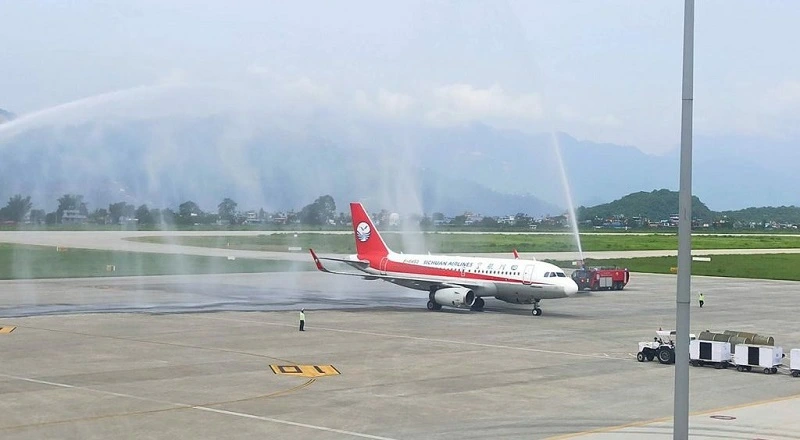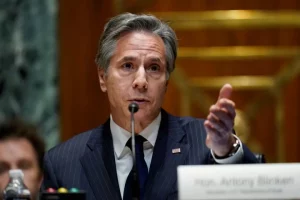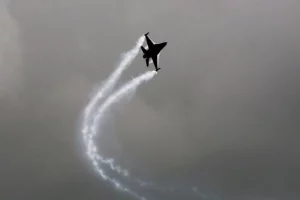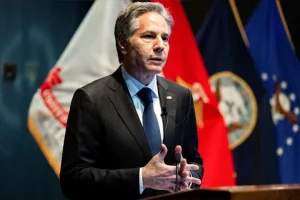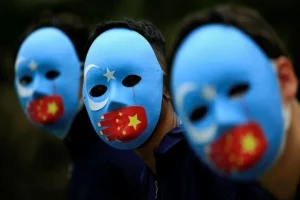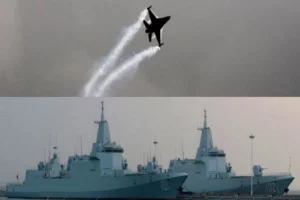Kathmandu: Nepal has rejected China’s claim that the newly constructed Pokhara International Airport is part of Beijing’s Belt and Road Initiative (BRI).
China first called the Pokhara international airport, built with Beijing’s assistance as a BRI icon, ahead of the facility’s inauguration on January 1. The Chinese embassy in Kathmandu had then tweeted: “This [Pokhara airport] is the flagship project of the China-Nepal BRI cooperation.”
But when the same theme was repeated by Chinese Ambassador Chen Song, on June 21, when the first flight landed at this airport, the Nepal government raised its objections.
Incidentally, the BRI is a multi-billion-dollar initiative undertaken by Chinese President Xi Jinping to build infrastructure mainly in Eurasia.
“Today, we have achieved an important milestone with the successful landing of an international flight. This achievement falls within the framework of the BRI project,” he said while speaking at a function organised to welcome the first international fight to the newly built airport from China.
Chen Song, the Chinese ambassador to Nepal, has again said that Pokhara Airport is under the BRI project. At the first international commercial Aeroplane landing event at Pokhara International Airport today, Ambassador Chen made such a controversial statement.#epardafas #PRIA pic.twitter.com/bNFR2e20w4
— epardafas.com (@englishpardafas) June 21, 2023
A Sichuan Airlines charter flight landed in the airport on June 21 carrying Chinese players to participate in the first Nepal-China Friendship Dragon Boat Race Festival held in Pokhara on June 23.
When a section of lawmakers questioned foreign minister Narayan Prakash Saud whether the airport was part of the BRI, seeking clarification about the government’s position on the issue, Saud on Monday responded in parliament, saying that no project has been implemented under the BRI in Nepal.
“As BRI implementation plan is under discussion between the two sides, no project under the BRI is yet to reach the implementation stage. I would like to clarify this fact,” he responded.
Nepal and China signed a Memorandum of Understanding (MoU) on BRI in May 2017. But after the Chinese side started to categorize even the projects that were initiated long before the signing of MoU as BRI projects unilaterally, the Nepali officials have been in a dilemma on how to deal with the situation.
The Nepal government signed a $215.96 million soft loan agreement with China Exim Bank in March 2016 for the construction of a new airport in lake city. Even before the loan agreement was signed, China CAMC Engineering, a Chinese company, was given the construction contract. At that time, the BRI was in a nascent stage as Chinese President Xi had first announced the idea of the BRI in 2013 as ‘One Belt, One Road’ which was later modified as BRI.
“Nowhere in the agreement signed with China, it has been mentioned that Pokhara International Airport falls under the BRI,” a senior official of Nepal’s Ministry of Foreign Affairs told India Narrative. “That’s why, Foreign Minister clarified Nepal’s understanding that it does not fall under the BRI.”
The China-built Pokhara International Airport, the 3rd international airport in Nepal, was put into operation on January 1, 2023 in the country’s second largest city. pic.twitter.com/mcW38HjC53
— South China Morning Post (@SCMPNews) January 3, 2023
China’s BRI scheme has become controversial because of the Western countries have been accusing China’s grand infrastructure scheme for the world of being a tool of snaring low-income countries into a ‘debt trap.”
Neighbouring India has also been opposing the BRI after China and Pakistan implemented China-Pakistan Economic Corridor through Pakistan-occupied Kashmir which India claims as its own.
Given this context, Nepali officials and experts say that the implementation of the BRI project has been geopolitically risky which may affect the commercial prospects of the BRI projects.
For example, India has not yet agreed to grant high-altitude air routes for Nepal from the country’s western side of Nepal which would enable commercial international flights to Pokhara International Airport and the Gautam Buddha International Airport in Lumbini in south-western Nepal—both constructed by the Chinese contractor. However, the Lumbini-based airport is an Asian Development Bank-funded project, only constructed by a Chinese contractor.
Some Nepali officials and experts suspect that India’s continued delay in granting new air routes to Nepal is due to China’s involvement in these airports though nobody has yet offered any concrete proof of that.
“Obviously, there is room to suspect that India may have a strategic interest not to allow air routes for these airports because of China’s involvement,” said Khadga K.C, professor at the Department of International Relations and Diplomacy, Tribhuvan University.
After Nepal and China signed the framework agreement on BRI in 2017, Nepal initially selected 35 projects to be undertaken under the BRI. Later, as per Beijing’s request, the total number of projects was brought down to nine, in which Pokhara airport had been excluded.
None of these projects have moved ahead in cooperation with China. Instead, of the proposed projects under the BRI—480MW Phukot Karnali Hydropower Project will now be developed by India’s NHPC Limited and Nepal’s Vidhyut Utpadan Company Limited. An MoU on this was signed between the two companies during Nepali Prime Minister Pushpa Kamal Dahal’s visit to India from May 31 to June 3.
Dinesh Bhattarai, former Nepali diplomat, and foreign policy advisor to Nepal’s Former Prime Minister Sher Bahadur Deuba told the India Narrative that China’s tendency to keep every project—old and new which are being implemented with Chinese assistance under the BRI increased the geopolitical risks to such projects.
“I am not sure why China is keeping every project in the basket of BRI when there is no such bilateral agreement,” he said. “I wonder if it is designed to convey a certain message to those powers who are against the BRI.”
He said that Nepal should tell the Chinese side not to put any bilateral project under the basket of BRI as long as there has been no bilateral agreement signed on the matter.
The Chinese assertion to bring older bilateral projects under the BRI also mirrors what the US did with its Millenium Challenge Corporation (MCC)-Compact Programme being implemented in Nepal.
Before the MCC Compact agreement was ratified by Nepal’s parliament, some American officials called the MCC a part of the Indo-Pacific Strategy, which was launched several years later than the launching of the MCC.
This invited political controversy in Nepal because many believe the Indo-Pacific Strategy is aimed at containing China and participating in such a programme is against Nepal’s stated policy of non-alignment.
This put the future of the $500 million into uncertainty. Later, the MCC clarified publicly that its compact programme was not part of the Indo-Pacific Strategy. Likewise, certain strong American pressure also forced Nepal’s parliament to ratify the US aid programme with the interpretative declaration in February last year.
पहिलो अन्तर्राष्ट्रिय उडान पोखरा अन्तर्राष्ट्रिय विमानस्थलमा अवतरण || Pokhara International Airport ||
Video Story By : Yuvaraj Shrestha/Setopati pic.twitter.com/g22TZcUYaZ— Setopati (@setopati) June 21, 2023
China has, however, continued to reiterate that the older projects with Chinese aid are also the BRI projects. Nepali experts say that such an assertion only invited scrutiny from China’s rivals, complicating the implementation of the Chinese-funded projects.
“Nepal needs infrastructure and Chinese aid is also important for the country’s infrastructure development. But implementing the projects where there is geopolitical factor concern, has been very challenging for Nepal,” said Bhattarai.
Given that the two countries interpret BRI differently, experts said that Nepal should seek clarification from the Chinese side to establish a uniform view on the matter.
“If the Nepal government says that no BRI project has been implemented, it has to talk with the Chinese side bilaterally and seek to be clear on why the Chinese side is putting any project assisted by in the BRI basket,” said Khadga K.C.
Also Read: China sends in new ambassador to revive stalled BRI projects in Nepal






